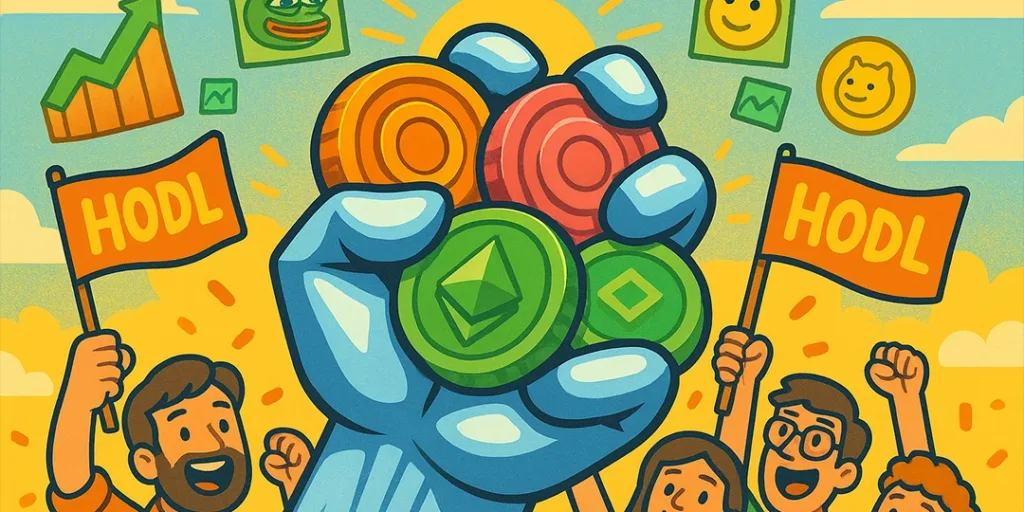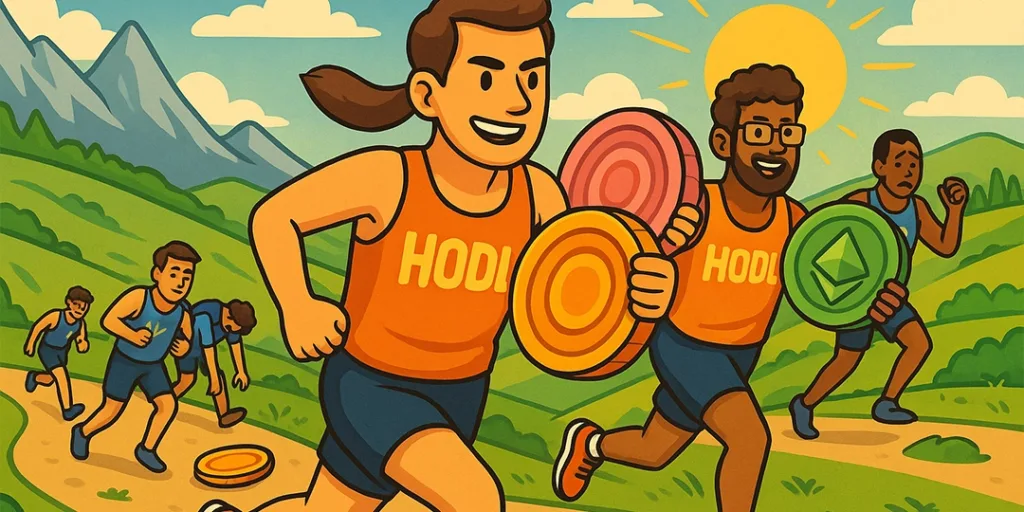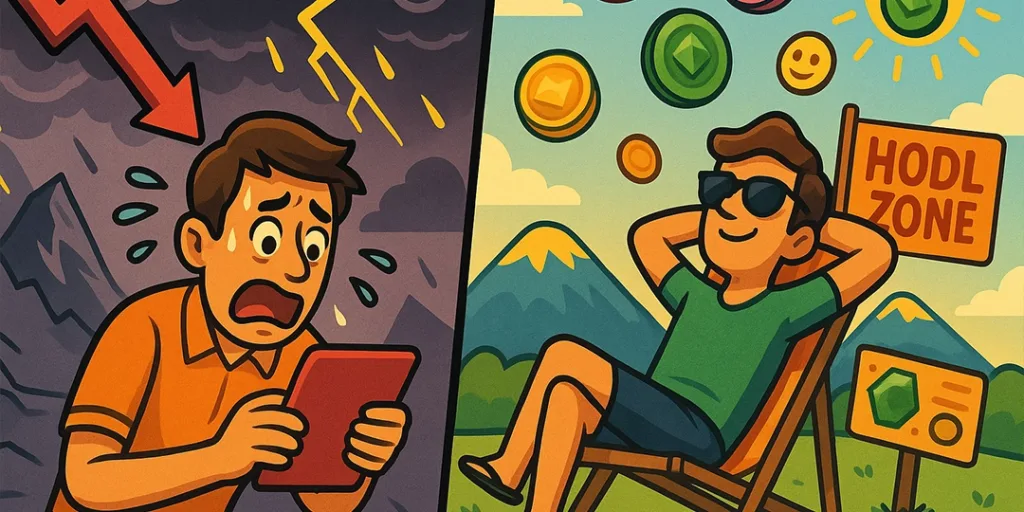One word stuck around for over a decade: HODLing. Believe it or not, it started as a tipsy typo in a Bitcoin forum back in 2013! But today? It means more. It’s a whole strategy, a battle cry, and honestly, a fascinating bit of human psychology that shapes how markets move.
So why do some folks cling to their crypto like treasure, riding crazy price swings without selling a single coin? And how does this “never sell” attitude ripple through the entire market? Let’s unpack the HODLer’s brain.

From oops to obsession
The word “HODL” was born in a legendary late-night post. A frustrated Bitcoin fan declared, “I AM HODLING!” (oops!). Instead of laughing, the community adopted it as a badge of honor—a promise not to panic-sell when prices crash.
Fast forward, now HODLing isn’t just slang; it’s a core strategy: buy crypto, hold it tight, and ignore the short-term chaos. But underneath? It’s a mix of belief, brain tricks, and sometimes, pure stubborn grit.
Why won’t they sell? The psychology inside
What makes a HODLer hold on so tight? Several intertwined factors explain why
- True Believers: For many, crypto (especially Bitcoin) is more than just an investment. It’s a movement. Selling feels like giving up on a dream—a future of money that’s open, fair, and free from big banks. It’s personal!
- Loss Aversion: Science shows us that losing $100 stings way worse than finding $100 feels good. So, selling after a price dip? Locking in that loss? Pure pain. Easier to just… hold… and hope.
- FOMO: Crypto history is full of epic comebacks. HODLers remember stories of people who sold too soon and missed the rocket ship. They’re determined: “Not this time! I’m waiting for the moon!”
- The Tribe Mentality: Being a HODLer is part of who they are. Online groups, Twitter pals, and Discord chats—they all cheer for “diamond hands” (strong holders) and tease “paper hands” (those who sell easily). Fitting in feels good!

How HODLing affects the markets
When hodlers hold tight, it could ripple the market. The collective behavior of HODLers doesn’t just influence individual portfolios; it can shape the entire market landscape.
- Reduced Liquidity: Meaning less stuff to trade. When huge amounts of crypto are locked away in “HODL vaults,” there’s less available to buy and sell. Less supply can make prices swing harder and faster.
- Price Stability During Sell-Offs: When panic hits and prices plunge, steadfast HODLers often refuse to sell. This can actually soften the crash, acting like shock absorbers for the market. Crash Cushions.
- Accelerated Bull Runs: On the flip side, when prices start rising, that scarcity (thanks to HODLers!) can send prices soaring even higher. New buyers scramble for the limited coins available, pushing prices up fast.
- Emotional Feedback Loops: HODLing creates a culture where holding is heroic and selling is… weak. This builds resilience but can also create a “follow the crowd” effect, sometimes blinding people to real risks.
HODLing’s awesome power and potential pitfall
Sure, HODLing made early believers rich. But it’s not magic. Blind loyalty can backfire:
- Profit Paralysis: Fear of selling “too soon” can mean missing chances to take good profits.
- Ignoring Red Flags: Sticking with failing projects, hoping for a miracle comeback? That’s risky business.
- The Heavy Bag: Sometimes, “diamond hands” just end up holding a bag full of coins that lost their value long ago.

Key takeaway
The HODL mindset is a powerful cocktail: deep belief, strong community, and very human brain quirks. It shows how emotion and conviction are just as important as cold, hard economics in the crypto world. Whether you see it as smart discipline or wishful thinking, one thing’s certain: HODLers aren’t going anywhere, and they’ll keep shaping crypto’s wild ride.
Just remember—even diamond hands need to check their grip sometimes. Holding on is great, but knowing when to let go? That’s true wisdom. —Until next time, Degenerals!














